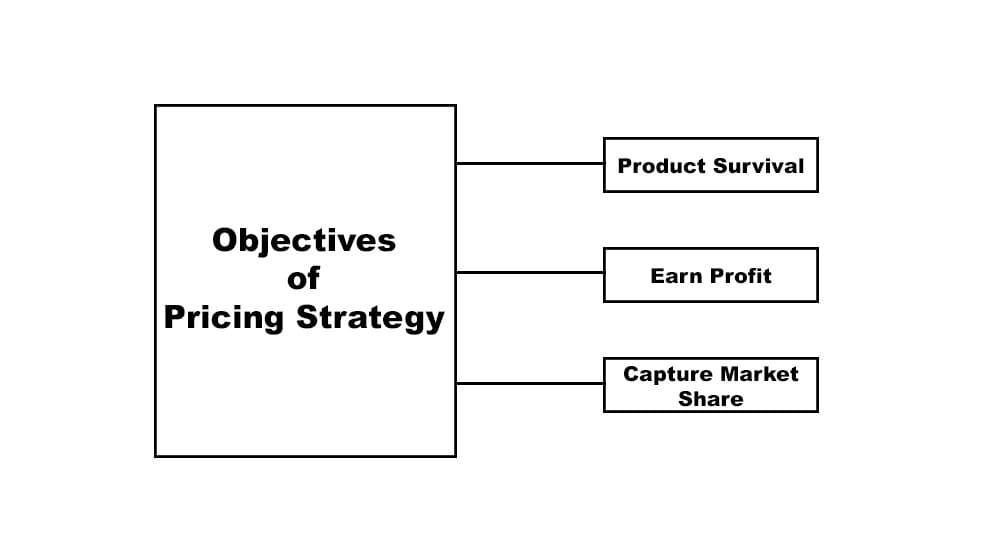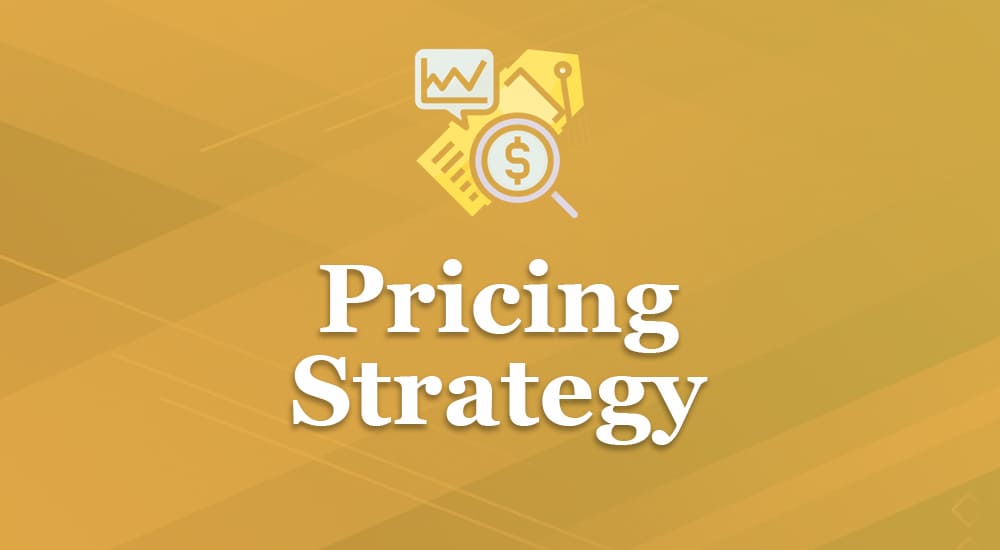Pricing strategy is key to business success. With the right approach, you can improve your profit margin and take your business to the next level. Setting the right price requires understanding your market, competition, and customer behavior. An effective pricing strategy attracts customers and ensures profitability and growth.
In today’s blog post, I will explain pricing strategies in marketing and discuss a few commonly used strategies.
Let us get started.
What is Pricing Strategy in Marketing?
Pricing strategy in marketing is the process by which businesses determine the price of their product or service. Product pricing is an integral part of marketing, and it considers all factors to reflect the market value of the product.
Product pricing is the value that the seller gets in exchange for goods and services.
Every business aims to earn a profit, and pricing strategy is key to achieving this objective.
The following are the key points in deciding the product or service pricing:
- The price of a similar product in the market
- The actual cost of the product
- After-sales support
- Warranty
The Objective of Pricing Strategy

The pricing strategy of a product has the following objectives:
- Product Survival
- Earn Profit
- Capture Market Share
Product Survival
This is the most crucial factor in product pricing selection, especially for new launches. Every product has an equal chance of acceptance or rejection by the audience, and businesses are very sensitive about this.
Product survival is essential. Therefore, businesses study the market pricing of similar products and adjust their prices accordingly. They calculate the actual cost of the product and a reasonable profit margin to set the final price.
They can tweak the price once the product is accepted in the market.
Earn Profit
This is the second most important key factor in pricing strategy after survival. Every business wants to earn profit and grow. The profit depends on many factors, such as market competition and brand value.
Brand plays a key role in determining the profit margin. Well-known brands can quickly increase the price and earn more profit because of the acceptability of their product. For example, Apple can increase the price of its products, and the audience will still buy the products because of brand recognition.
Market competition is another factor affecting the profit margin. If the competition is fierce, the business may not want to increase its profit margin, which could deter customers.
Capture Market Share
The third key factor in pricing strategy is capturing market share. For new product launches, many businesses keep the price of their products or services low to capture a short-term market share.
A higher volume also helps keep production costs low because of the economy of scale.
FMCG and the telecommunication sectors are good examples of this strategy.
In India, Reliance launched its telecommunication services with free subscriptions, which helped it quickly attract millions of users and become the third-largest telecommunication company in the country.
This pricing strategy is called penetrating pricing. It is useful when competition is fierce and consumers are price-sensitive
In a penetrating pricing strategy, businesses temporarily offer their products or services at a low price for a shorter period to attract customers. This strategy helps companies to penetrate the market and steal customers from competitors.
Five Commonly Used Pricing Strategies
The following are the five most common pricing strategies:
1. Cost-Plus Pricing
Cost-plus pricing is a simple pricing method. A business calculates the total cost of making a product or service and then adds a fixed percentage as profit. This final amount becomes the selling price.
How It Works
- Find the total cost. This includes materials, labor, and overhead.
- Choose a markup percentage.
- Add the markup to the cost.
- The result is the final price.
For example, if a product costs $50 to make and the markup is 20%, the selling price will be $60.
Advantages
- Easy to use: Businesses only need cost and profit percentage.
- Ensures profit: The business makes money as long as costs are covered.
- Transparent: Customers and investors can understand the pricing.
- Works in stable markets: Useful when costs do not change often.
Disadvantages
- Ignores competition: It does not consider market prices or demand.
- May overprice or underprice: If costs are too high or too low, the price may not be correct.
- Does not push efficiency: Companies may not control costs well.
- Not best for changing markets: The price may not stay competitive if material costs fluctuate.
Cost-plus pricing is simple and guarantees profit. However, it may not work in highly competitive or changing markets. Companies must check if it suits their industry.
2. Competitive Pricing
Competitive pricing is a method in which businesses set prices based on competitors’ prices. They check market prices and adjust their own. This strategy is common in industries with many sellers and similar products.
How It Works
- Research competitor prices.
- Choose a pricing approach, such as a lower price to attract more customers, the same price to match the market, or a higher price to show better quality.
- Adjust prices based on demand and market trends.
For example, if most competitors sell a product for $100, a business may sell it at $95 to gain customers or at $105 with added benefits.
Advantages
- Simple to apply: Just follow market trends.
- Attracts customers: A lower price can increase sales.
- Prevents overpricing: Helps keep prices reasonable.
- Works well in competitive markets: Best for industries like retail and electronics.
Disadvantages
- Ignores cost: Prices may be too low to cover expenses.
- Limits profit: Price wars can reduce earnings.
- Hard to stand out: Similar pricing makes differentiation challenging.
- It may hurt the brand image: A lower price may seem like lower quality.
Competitive pricing helps businesses stay relevant in the market. However, companies must watch costs and avoid price wars. It works best when balanced with quality and value.
3. Price Skimming
Price skimming is a pricing method in which businesses start with a high price and lower it over time. This strategy works best for new and unique products.
How It Works
- Set a high price: The price is high when a product is first launched.
- Target early buyers: Customers who want the latest product buy first.
- Lower the price gradually: As demand drops, prices decrease.
- Reach more customers: Over time, more people can afford it.
For example, a new smartphone may start at $1,200. After a few months, the price drops to $1,000, then $800. This allows the company to earn high profits before selling to price-sensitive buyers.
Advantages
- Maximizes early profits: High prices bring substantial revenue at launch.
- Creates brand prestige: Expensive products seem high-quality.
- Recovers costs quickly: Helps cover research and development costs.
- Allows market control: Competitors struggle to match pricing early.
Disadvantages
- Limits customer base: High prices reduce initial buyers.
- May attract competitors: Other companies may copy the product.
- Price cuts may upset early buyers: Some customers may feel overcharged.
- Not ideal for all products: Works best for tech, fashion, and luxury items.
Price skimming helps businesses earn high profits early. However, it can also limit sales at the start. Therefore, companies should use it for unique, high-demand products.
4. Penetration Pricing
Penetration pricing is a strategy where businesses set a low price to attract customers. The goal is to enter the market quickly. Once the business gains customers, it may increase prices.
How It Works
- Set a low price: The product is cheaper than competitors.
- Attract customers: The low price encourages people to buy.
- Build market share: More people start using the product.
- Raise the price later: Once customers are loyal, the price may increase.
For example, a new streaming service may offer a $5 monthly subscription. After a year, the price increases to $10, and many users may already be subscribed.
Advantages
- Quickly gains customers: More people buy because of the low price.
- Increases brand awareness: The product becomes well-known.
- Discourages competition: Other companies may avoid entering the market.
- Works well in price-sensitive markets: Attracts budget-conscious buyers.
Disadvantages
- Lower short-term profits: The company earns less at first.
- Price increase risk: Customers may leave if prices go up.
- May create a cheap image: Some people may see the product as low-quality.
- Not sustainable long-term: Low prices may not work if costs are high.
Penetration pricing helps new businesses attract customers fast. However, companies must be careful when raising prices later. This strategy works best in competitive, price-sensitive markets.
5. Value-Based Pricing
Value-based pricing is a strategy where businesses set prices based on the customer’s perceived value. The price reflects the product’s benefits rather than its cost.
How It Works
- Understand customer needs: Find out what customers value in the product.
- Analyze competitors: Compare how similar products are priced.
- Set a price based on value: Charge what customers are willing to pay.
- Adjust as needed: Change prices based on demand and trends.
For example, a premium skincare brand may charge $80 for a face cream. Although the production cost is low, customers see the product as high quality and worth the price.
Advantages
- Maximizes profits: Companies can charge higher prices for valuable products.
- Focuses on customer needs: Pricing is based on what buyers are willing to pay.
- Encourages product quality: Businesses improve products to increase value.
- Works well for premium brands: Luxury and tech brands use this strategy.
Disadvantages
- Requires deep market research: Companies must understand customer preferences.
- It can be hard to justify the price: Customers may not see the value immediately.
- Risk of losing price-sensitive customers: Some people may prefer cheaper options.
- Not ideal for all markets: Works best for unique, high-demand products.
Value-based pricing helps businesses charge higher prices by focusing on customer perception. However, companies must understand their market well. This strategy works best for premium and innovative products.
Summary
Pricing strategy is key to business survival. Setting the right price in marketing requires understanding various factors, such as market competition, product brand recognition, and customer demand. An ideal pricing strategy enables organizations to stay in business, generate profits, and deliver value to consumers. Businesses can create a strategy that ensures long-term success by carefully evaluating pricing models and market conditions.
A well-planned pricing approach benefits companies and customers, fostering growth and sustainability.
